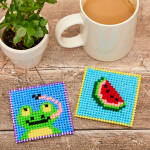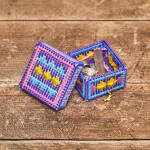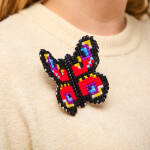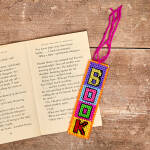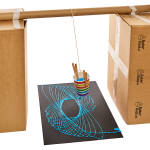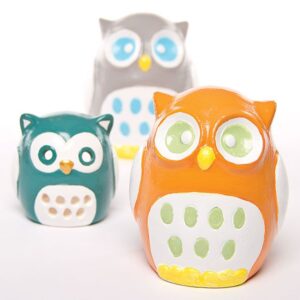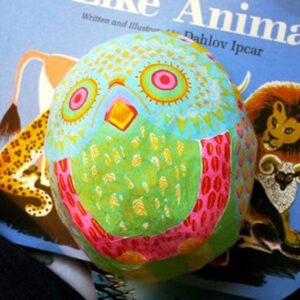Skill Level
Beginner. Adult supervision needed
Time to Make
1 hour + drying time for air clay (24-48 hours), paint + varnish
Adult Supervision Needed
Yes
How to Make
- To make a circular background for the plaque, shape a piece of clay between the palms of your hands into 6cm diameter ball. Place the clay onto a plastic bag or a piece of cling film then press it with your fingers to flatten the surface. Smooth and shape the clay with your fingers to make a flat circle approximately 11-12cm in diameter, 6-8mm deep. The shape doesn’t need to be completely even. Add some water to the clay if it starts to dry out or crack around the edges.
- Using a cocktail stick, lightly draw a simple outline for the owl onto the surface of the clay. Position the owl in the middle of the circle, leaving space around the edge.
- To make the owl’s head, shape a 2cm ball of clay, press it into a flattened oval then press it onto the background covering the head outline. Smooth the head around the edges with a modelling tool. For the eyes, flatten 2 x 1cm balls of clay the press onto the head. Push a pen lid into the clay to make circle patterns for the eyes and add lines around the edge with a flat-ended modelling tool. Shape a small beak then press it between the eyes.
- To make the owl’s body, press a 3cm ball of clay with your fingers, roughly following the outline shape. Press the clay onto the background then use a modelling tool to smooth the edges and adjust the body shape. Press a pattern into the body using a piece of drinking straw cut in half to make a ‘U’ shape.
- To make the owl’s wing flatten a 2cm clay ball then shape it with a point at one end. Press the wings onto the owl’s body then add a feather pattern with a modelling tool. Roll thin clay pieces for the owl’s legs and feet. Use a flat-ended to define the claws.
- Shape 2 small clay leaves, press them onto the background with a small ball for the olive and thin rolled pieces for branches.
- Before the clay dries, the shapes can be refined and re-shaped. To reduce a shape, carefully press around the edge of the clay relief with modelling tool, flattening the edge into the background. To enlarge a shape, add a small amount of clay around the edge of the relief, adding some water if necessary, then smooth over the join with the end of a modelling tool.
- Leave the clay to dry on the plastic bag or piece of cling film or on a ceramic tile. Avoid leaving it on a piece of card or near a radiator as the clay may crack if it dries out too quickly.
- When the clay has fully dried, paint the owl and branch using an orange or terracotta colour. Leave the paint to dry then fill the surrounding background with black.
- Optional
- To add more definition to the design use a thin brush to work black paint into the patterns on the owl. Rub over the surface with a wet wipe to remove any excess paint from the raised orange areas, so the black just remains in the patterns. If any black is left over the orange,
it adds to the aged effect so you may prefer to leave it like this.



Top Tip
Keep any unused clay wrapped in the packaging inside a plastic bag so it doesn’t dry out. Add some water onto the clay with your fingers if the surface starts to dry out.
Tagged with:
Birds


